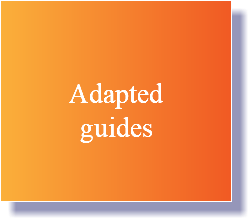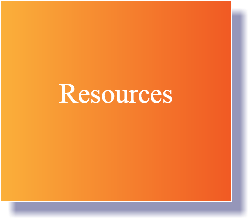Background
Why and how were the guidelines developed? (please click)In our work between the science and practice of nature conservation and sustainable development, we have detected that practitioners often struggle to identify – and tap into the potentials of – the policy and financing instruments that could work in their particular context. Academic debate on the issue addresses many relevant points but often uses generalized framings, complex formats and academic language which are unfamiliar to those working on their implementation.The guidelines presented here should serve as a compass for practitioners towards recognizing the opportunities for their specific context and towards selecting and planning suitable instruments which will lead to more sustainable practices. We hope that the tool will inspire and structure the quest for policy and financing solutions and eventually bring about conservation and livelihoods benefits alike.The guidelines were first developed during the ECO-BEST project in Thailand (2011–2015) in order to structure the implementation of economic policy instruments in three Thai pilot sites. Using state-of-the-art academic concepts, methodologies and approaches relating to ecosystem service assessments, policy instruments for biodiversity conservation and participatory processes, we have aimed to translate and incorporate them into a practical, field-based manual for conservation and development planners and managers. We also draw on, synthesize and adapt the insights and methodologies developed under various other practice-oriented guidelines, such as the 6-step approach developed within ‘TEEB in Local and Regional Policy and Management’ (TEEB 2012a), the 6-step approach to ‘Integrating Ecosystem Services into Development Planning – IES’ (Kosmuset al. 2012), or the step-by-step guidelines developed by The Word Resources Institute (WIR 2008 a,b).By now, the guidelines have been applied in many more countries and in different contexts (México, Costa Rica, Colombia, Perú, India, Thailand, Pacific Islands, Jordania, Uganda etc. The web-based guidelines are a modified version of initial print format (Rode and Wittmer 2015). They take into account the lessons, examples, and additional material based on all the application experiences as well as on more recent conceptual approaches and policy support tools. The guidelines and the material provided by the website are continuously updated.Target audience: Who can use these guidelines? (please click)The guidelines are for people in both conservation and development sectors responsible for designing, planning and implementing conservation and development activities in areas with high biodiversity or important ecosystem services. For conservation practitioners they can help incorporate economic and development concerns into conservation planning and management. For development practitioners they can help integrate biodiversity and ecosystem service opportunities into development planning.Potential users include people from government agencies, non-governmental organisations, community groups and private companies. The guidelines can assist in: • protected area or buffer zone management, • forest or watershed management, • income generation, poverty alleviation or benefit-sharing arrangements for rural communities, including tourism development, • integrated land use planning in rural or urban areas, • infrastructure development (for instance when a dam project, road development, town or industrial estate development, or an irrigation system is proposed), • identifying options for ‘green’ production and investment opportunities for the private sector.Our primary audience is the technical staff, consultants and researchers who will actually be involved in working through the steps and tasks on the ground. The guidelines provide a detailed, step-by-step ‘how to’ guide to steer the team through the whole process. The team leader or someone else in the core team should ideally have some training (e.g. undergraduate education) in economic approaches and methods, be familiar with the concept of ecosystem services, and have a background in rural development or community-based conservation. Without this experience it may be more difficult to apply the guidelines successfully – though not entirely impossible!In addition, we envisage that at least two other audiences may find the guidelines useful: • Those in charge of commissioning and overseeing the design and planning of an economic instrument may want to familiarize themselves with the introduction and the quick reference section to see why it would be useful to carry out this kind of step-by-step process. • Those responsible for commissioning and approving technical studies could benefit from reading the introduction, the quick reference section, and Stage I of the process, and then glancing briefly at Stages 2 and 3. This will help in budgeting, designing the terms of reference for contributors to the process, evaluating proposals (or hiring people to do so), keeping an eye on progress, and judging the quality of the final product.Guiding principles that can enhance the success of the approach (please click)Involving stakeholders: Stakeholders should be involved throughout the process, and explicit efforts should be made to recognize and balance their different ideas and interests. This means identifying and engaging key groups and individuals from the outset, and ensuring their continuous participation during the entire identification and planning process. Special effort should be made to ensure that the process is as inclusive, open and transparent as possible, especially for those already socially or economically marginalized, or who lack a ‘voice’ Capturing ecosystem opportunities requires groups of people to change their behavior. Stakeholder involvement makes it possible to understand people’s motivations for current (unsustainable) behaviour and resistance to change, reveals existing conflicts and collaborations, and exposes related issues they are struggling with. A good understanding of their positions, interests and constraints is essential for new instruments to be designed successfully. Stakeholders are much more likely to accept the proposed policy if it alleviates or at least addresses their constraints. Similarly, early piloting with particularly motivated stakeholders to find out what ‘flies’ or not – and for what reasons – can help to fine-tune the instrument and avoid painful learning experiences or failure with a larger group. In addition, involving stakeholders from the outset increases the legitimacy of the process. The guidelines assist successful stakeholder involvement during each step of the process.Integrating a range of knowledge and expertise: The approach described in these guidelines is transdisciplinary, developing objectives and solutions with stakeholders and integrating a wide range of knowledge and expertise. When choosing the members of the team, both technical and strategic factors should be considered. The team should cover key technical disciplines and almost always include local experts and knowledge-holders. Equally important, however, is a solid understanding of the ‘big picture’ of both the general approach and the goals. At different stages, the team will most likely need access to additional expert knowledge (e.g. of local bio-physical relations or legal aspects, or for economic valuation). Whatever the specific needs of a particular assignment, the team will probably include people with various natural and social scientific backgrounds (e.g. economics, law, biology, ecology and hydrology) as well as different experiences and interests (e.g. planners, managers, researchers, local government, land and resource users and community representatives). Balancing and integrating these different perspectives requires a strong, well-coordinated approach to leadership and teamwork.Communicating effectively: Communication deserves special attention. It is vital for ensuring the smooth running of the process, for maintaining collaboration and cooperation within the team, and for fostering the buy-in and ownership of stakeholders. It may even be useful to have a communication expert follow the entire process. For effective communication in a change process, listening carefully and adjusting to stakeholder motivations, needs and constraints is just as essential as clear communication within and beyond the team. In conservation, it is particularly important that people don’t feel judged, i.e. that they are thought to be doing wrong and need to be re-educated. Communication challenges need to be addressed – and are likely to vary − at every stage of the process, identifying what needs to be communicated, to whom, and how best to do it. For instance, at the very beginning it is crucial to develop a clear message about the broad aim and vision behind the assessment and to specify how it will be carried out, who will be involved, and what it might entail. Later in the process, a new arrangement or instrument with specific activities will need to be proposed and discussed. The guidelines highlight communication issues at different stages of the process.Taking a flexible, adaptive approach: The steps and tasks follow a logical, iterative process and often depend on information generated or agreement reached earlier. However, a process like this can never be entirely linear. Adjustments will often be necessary: for example, combining various tasks, reordering them, repeating them, or going back and forth. It is very important to adapt and respond to the current context and to integrate feedback, new information or changing circumstances in order to move on effectively. Last but not least, these guidelines lay out a road map for change, but success will largely depend on the energy and ingenuity of you and your team.What are ‘Ecosystem Service Opportunities’? (please click)There are many reasons why people engage in unsustainable activities that harm natural ecosystems and thereby also the services provided by nature to different groups of society. Very often, people degrade, convert or over-exploit the natural environment because it is profitable (or less costly) for them to do so. Local communities often lack access to alternative products, technologies, markets and practices that could provide more sustainable income and employment alternatives. Moreover, the costs and benefits of conservation are often spread unevenly. The people who actually manage the land and its resources incur most of the cost, through restrictions on their economic activities and opportunities. At the same time, they often receive a disproportionately low share of the benefits. In such cases there is very little local-level motivation to manage land and resources in a way which will conserve biodiversity and ecosystem services.‘Ecosystem service opportunities’ are the points of intervention where policy and financing instruments can be used to achieve more sustainable behavior and motivate actors to safeguard ecosystems.The process for finding these opportunities happens in Step 3. It builds on an analysis of how different human actors relate to ecosystem services (stewardship, use, degradation). Recognizing the gaps, imbalances, and potentials in the current situation of this relationship, the process employs four general economic principles (‘Steward Earns’, ‘Beneficiary Pays’, ‘Polluter Pays’, and ‘Innovation’) to specify how the behavior of a specific actor (group) can be changed towards sustainable development and ecosystem conservation. Step 4 of the guidelines describes how to find suitable policy and financing instruments to tap into the opportunities. Steps 5-7 deal with the design and planning process of the policy or financing instrument.These are a few examples of “ecosystem service opportunities”:Based on the “steward earns” principle: • Traditional extensive cattle rangers could be supported (with financial support, technical assistance, etc.) for adopting sustainable management practices that are adapted to maintaining a healthy savannah ecosystem. • Indigenous people could be esteemed and rewarded for their role in conserving the ecosystems and protecting threatened species on their land.Based on the “beneficiary pays” principle: • Tourists could be motivated or obliged to contribute to the protection of the river ecosystem that they enjoy for fishing and other outdoor activities. • The brewery that benefits (so far for free) from the stable flow of clean water from the watershed could be asked to contribute financially to the costs of good watershed management and reforestation measures.Based on the “polluter pays” principle: • Speeding on highway 304 and road kills could be pursued and punished. • Agro-industrial companies with palm oil plantations could mitigate and/or compensate the negative impacts of their monocultures on biodiversity by investing in biodiversity protection measures, preferably in-situ on their plantations and/or by setting aside part of their land for conservation. Based on the innovation principle: • Locals involved in handicraft made of the leaves of the endemic palm tree could be supported in developing an ecological label and new markets and sales channels. • Community members could be trained and supported in the implementation of integrated waste management to reduce solid waste and stop waste being dumped in the river.How is the Step-by-Step process organized? (please click)The Step-by-Step process is the core of the ESO guidelines. The seven steps are organized in three stages. Within each of the steps you will be guided toward carrying out different tasks in a specific order. For each task, you will find information about the content (‘What this task is about’) and the process (‘How to go about this task’). Although the steps and tasks follow a logical, iterative process and often depend on information generated or agreement reached earlier, it is important to be flexible and adapt to the context.It is not always necessary to apply all seven steps, and the procedure will typically form part of a wider project or policy cycle and needs to be integrated into it. Stage 2 (Steps 2–4) could be used in isolation as a scoping exercise for understanding which instruments could be useful in a particular setting. If opportunities are found, then the results of the scoping could be used to request funding for a more integrative process and to actually develop an instrument. A quick version of Stage 2 can also be used to justify a new project on this topic or to put the topic on the political agenda. In other instances, team leaders may already have a specific instrument in mind. In that case the focus will be on the design and planning aspects covered in Stage 3 (Steps 5–7). Sometimes it might still be useful to confirm the initial ideas using Steps 2–4 (and to take stakeholders on board).
Step 4 of the guidelines describes how to find suitable policy and financing instruments to tap into the opportunities. Steps 5-7 deal with the design and planning process of the policy or financing instrument.These are a few examples of “ecosystem service opportunities”:Based on the “steward earns” principle: • Traditional extensive cattle rangers could be supported (with financial support, technical assistance, etc.) for adopting sustainable management practices that are adapted to maintaining a healthy savannah ecosystem. • Indigenous people could be esteemed and rewarded for their role in conserving the ecosystems and protecting threatened species on their land.Based on the “beneficiary pays” principle: • Tourists could be motivated or obliged to contribute to the protection of the river ecosystem that they enjoy for fishing and other outdoor activities. • The brewery that benefits (so far for free) from the stable flow of clean water from the watershed could be asked to contribute financially to the costs of good watershed management and reforestation measures.Based on the “polluter pays” principle: • Speeding on highway 304 and road kills could be pursued and punished. • Agro-industrial companies with palm oil plantations could mitigate and/or compensate the negative impacts of their monocultures on biodiversity by investing in biodiversity protection measures, preferably in-situ on their plantations and/or by setting aside part of their land for conservation. Based on the innovation principle: • Locals involved in handicraft made of the leaves of the endemic palm tree could be supported in developing an ecological label and new markets and sales channels. • Community members could be trained and supported in the implementation of integrated waste management to reduce solid waste and stop waste being dumped in the river.How is the Step-by-Step process organized? (please click)The Step-by-Step process is the core of the ESO guidelines. The seven steps are organized in three stages. Within each of the steps you will be guided toward carrying out different tasks in a specific order. For each task, you will find information about the content (‘What this task is about’) and the process (‘How to go about this task’). Although the steps and tasks follow a logical, iterative process and often depend on information generated or agreement reached earlier, it is important to be flexible and adapt to the context.It is not always necessary to apply all seven steps, and the procedure will typically form part of a wider project or policy cycle and needs to be integrated into it. Stage 2 (Steps 2–4) could be used in isolation as a scoping exercise for understanding which instruments could be useful in a particular setting. If opportunities are found, then the results of the scoping could be used to request funding for a more integrative process and to actually develop an instrument. A quick version of Stage 2 can also be used to justify a new project on this topic or to put the topic on the political agenda. In other instances, team leaders may already have a specific instrument in mind. In that case the focus will be on the design and planning aspects covered in Stage 3 (Steps 5–7). Sometimes it might still be useful to confirm the initial ideas using Steps 2–4 (and to take stakeholders on board).![]() This icon indicates a template or checklists to help the user apply the guidelines and keep track of what has been found out and achieved.Throughout the guidelines, examples are provided of template tables from different application experiences.
This icon indicates a template or checklists to help the user apply the guidelines and keep track of what has been found out and achieved.Throughout the guidelines, examples are provided of template tables from different application experiences.![]() This icon indicates an important tip. Important tips regarding specific aspects of the process are highlighted in boxes.
This icon indicates an important tip. Important tips regarding specific aspects of the process are highlighted in boxes.![]() This icon indicates a specific lesson or example.For each step, the guidelines provide selected references and further guidance for carrying out the tasks.
This icon indicates a specific lesson or example.For each step, the guidelines provide selected references and further guidance for carrying out the tasks.
The step-by-step process
Stage 1: Preparation: The first stage contains a single step and explains the preparation for the process.
Stage 2: Understanding the situation and identifying opportunities (please click)
Stage 2 (Steps 2–4) describes a stakeholder-inclusive assessment process to
1) understand the situation and the issues related to ecosystem services,
2) identify the opportunities for improving the situation towards more sustainable behaviours, and
3) select suitable policy and financing instruments.
Stage 2 can also be used as a scoping exercise for understanding the extent to which policy and financing instruments might be useful in a particular setting. If the opportunities seem worth pursuing, the results of the scoping could be the basis for a funding proposal to conduct a more integrative process and to develop an instrument.
Stage 3: Designing and planning the instrument (please click)
With the short-list of potentially suitable economic instruments at hand, this part of the guidelines supports the participative design and planning process of the economic instrument(s), clarifying what exactly is to be implemented, how, and by whom. The guidance in Stage 3 is in some ways more general than the guidance in Stage 2.
The reason is twofold:
i) the context of the local situation will be different for each application;
ii) the type of instruments selected at the end of Stage 2 can take many forms.
Following the tasks in the step-wise process serves as a general road map, but we also provide links to other resources
that may offer more specific guidance on a particular economic instrument.
EN
ES








